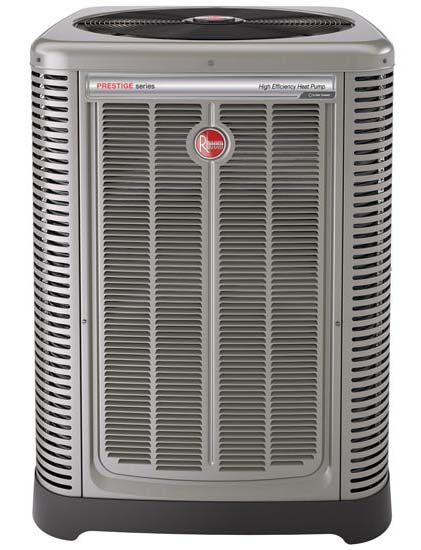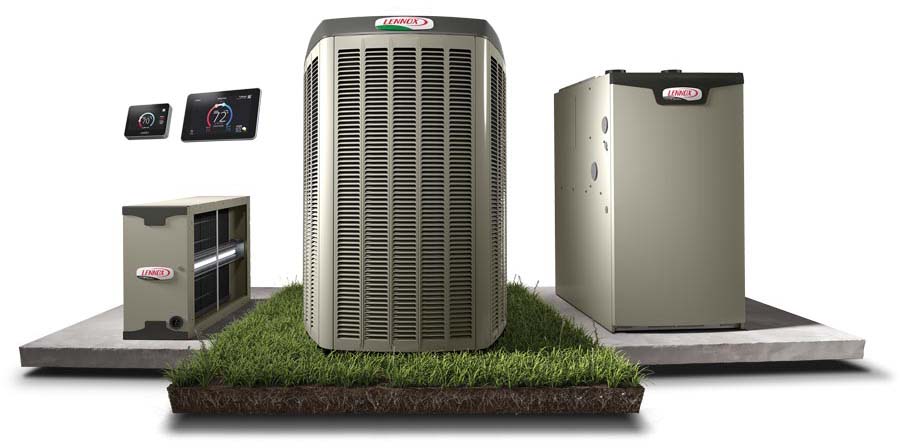High-end residential HVAC today means more than a higher SEER. It means more comfort, less noise, and increased connectivity. Thanks to the dropping price of technology and the increased availability of financing, more consumers than ever can enjoy these benefits, creating a larger market for HVAC contractors informed about these systems.
“Homeowners in the high-end HVAC market are looking for systems that are quiet, efficient, and as compact and unobtrusive as possible,” said Ian Goicochea, executive regional sales engineer for LG Air Conditioning Technologies. “To enhance their way of life, they look for the convenience of connectivity with the rest of the electronics in their home.”
Consumers also want more control over their individual environments, said Steve Scarbrough, vice president of residential business for Mitsubishi Electric Trane HVAC US (METUS). Scarbrough said METUS finds greater interest in indoor units with innovative sensors for more responsive and personalized comfort.
“Residential cooling overall has become much more focused on energy efficiency and personalized comfort in recent years,” he said. “It’s no longer enough for cooling units to be durable and high performing, but they must offer smart comfort that matches how homeowners use each zone in their home.”
The biggest trend that is available to a broader audience and a feature of high-end residential is the utilization of air source heat pumps and single-phase VRF products, Goicochea said. The new generation of inverter compressors allows for efficient heating and cooling at both high and low ambient temperatures and has been around long enough to be available at most price points.
Brandon Chase, senior product manager at Lennox International Inc., agrees that inverters or variable capacity compressors are popular right now. This technology is fairly new to U.S., Chase said. It has been used in mini-splits mainly, but the price has come down so they can be used in bigger systems.
Homeowners Want Connected Homes
As with most aspects of their lives, consumers want connectivity when they pay for high-end air conditioning.

QUALITY CONNECTION: More systems offer the ability to set points via smart devices, but connected air systems, such as its Prestige Series Variable Speed RA20 System, allow homeowners to control air conditioners from their devices.
“Homeowners are seeking controlled comfort,” said Jeff Goss, senior manager of product development, Rheem.
Connectivity benefits dealers as well, Chase said. It creates an ongoing relationship between the dealers and their customers. It also makes installation and maintenance easier. A connected system is easier to check, reducing the chance for installation mistakes that can harm the relationship with the homeowner. Chase said it also makes the process more pleasant for the installing technician, as greater connectivity means less time in attics and other confined spaces. A properly installed system means contractors avoid follow-up calls, which cost them money.
Connectivity proved especially helpful during the coronavirus lockdowns, when consumers were worried about people entering their homes. Manufacturers may not have planned the system with this scenario in mind, but it was a fortunate by-product
The Biggest Mistake Made With High-End HVAC
According to Goicochea, the biggest mistake technicians seem to make is to expect that they can work on the new models of high-end air conditioning equipment the same way they worked on previous generations of equipment. He uses the analogy of older and newer cars. On a car from the 1970s, a mechanic with a trained ear could get under the hood with a wrench and fix most problems. Modern cars are computer-driven, and their tolerances are more limited, meaning mechanics need to connect a diagnostic tool and computer to fix problems. Newer high-end air conditioning systems are exactly like that.

RANGE OF PRODUCTS: High-end HVAC, such as the Lennox Ultimate Comfort System, today covers a range of consumer needs, including comfort, connectivity, and quiet.
The best way to ensure proper installation is education. Most manufacturers of high-end air conditioning systems offer installer training. LG has made a huge commitment to this through both virtual and in-person academy classes, Goicochea said.
Some contractors regard training as an expense rather than an investment, but the idea that it’s hard to pull guys out of the field for training misses the point, Goicochea said. A half day or a full day of training can save the technician or contractor the time it takes to chase down issues or, worse yet, to deal with an unhappy customer.
Philip Oglesby, Rheem’s manager of education and content development, agrees. His company is working on ways to enhance technician education by expanding online training with more than 40 technical courses. Rheem will soon introduce custom 3-D courses for the company’s high-end product line, where contractors will have the option of using their computers or a virtual reality headset to participate and complete the courses.
Performance issues are commonly caused by inaccurate load calculations and incorrectly sized and specified equipment, Scarbrough said.
“All members of a project team should have a basic understanding of a home’s load profile and feel comfortable reviewing summary load reports, even if they aren’t performing the calculations,” he said. “This increases the likelihood of catching an error or someone noticing if the design doesn’t match how the occupants will use the home’s zones.
HVAC systems should be sized according to design loads even if the systems have variable-capacity, since the equipment will still have a range, Scarbrough said. Otherwise, technicians should take care to follow regular best practices, make sure all of the equipment matches the design during pre-check and refer to manufacturer training and product manuals. Some high-end central systems use dampers for zoning, requiring a higher degree of knowledge and skill for the designing and installation. High-end hybrid ductless and ducted zoned comfort systems, Scarbrough continued, require a knowledge of the homeowner’s desired uses of the rooms and perform room-by-room load calculations. These systems tend to have more capable controls technology, so there’s a learning curve the contractor has to overcome.
Financing Available
The other mistake comes in not knowing how to sell high-end equipment, Chase said. Dealers need to understand how these systems benefit the homeowner. They need to focus less on technical issues and more on real-life benefits.
“They don’t talk about how the homeowner will feel,” Chase said.
Dealers talk about what they are comfortable with, Chase said, which usually means the technical aspects of a system. One topic many in the HVAC find uncomfortable is price. High-end HVAC costs more, and a common worry among HVAC dealers and their technicians is that offering a more expensive option might turn off homeowners.
Chase said price is definitely an issue.
“If they just talk about the full price, there can be some sticker shock,” Chase said.
Homeowners, even those who are wealthy, have limited funds, he said. That’s why Lennox encourages its dealers to participate in its financing program. Chase said dealers also need to explain how a high-end system increases energy efficiency, thereby saving money in the long run. They also need to ensure that there will be a long run by stressing reliability.
The U.S. economy is unpredictable right now, Oglesby said, but even in such circumstances, there are essential things that do not change. This includes a person’s or family’s desire for a safe, comfortable environment and demand for products that make this happen. High-end residential air conditioning systems provide a level of predictability for homeowners wanting to have in-home comfort that is stable and fully in their control, he said.
Senior product manager Lennox International Inc.
Shelter in Place Boosts Interest
Predictability is even more important today as people spend more time at home due to stay-at-home orders, a condition that might last for many as they move to telecommuting. This creates a new opportunity for high-end HVAC.
“I see people looking at how to keep their office comfortable without cooling or heating the whole home,” Goicochea said.
VRF technology is a solution which allows a homeowner to cool or warm specific zones throughout the house. VRF allows a homeowner to simultaneously heat and cool; for instance, the nursery remains warms while the home gym cools. It is very possible the industry will see increased demand there, Goicochea said.
In the end, offering high-end HVAC improves the relationship between consumers and contractors. It shows the consumer that an HVAC technician is someone capable of implementing high-tech solutions.
“Often, the benefit comes from a diverse product and service offering where they can show the customer that they can not only hang the equipment and connect refrigerant lines, but also install and commission smart home controls,” Goicochea said.
Offering high-end solutions opens a new market for HVAC contractors, Scarbrough said.
“Contractors who offer high-end air conditioning are exposed to an expanded bank of resources and are able to approach a demographic that is willing and able to invest a bit more in their HVAC systems,” he said.
High-end HVAC also increases homeowner satisfaction, Chase said, by providing a quieter, cooler, and cleaner environment.
“Those homeowners who buy these systems are happier with their system and more likely to share that by word of mouth,” he said.



Report Abusive Comment